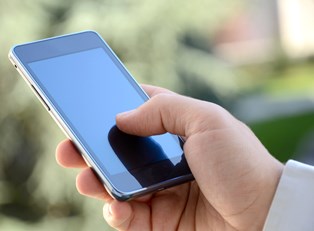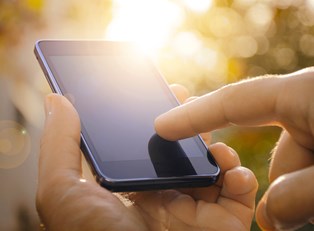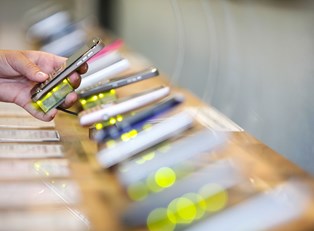In another life, I was a mobile sales rep for a national retailer. We did everything from selling plans for the three major service providers to upgrading devices. More often than not, customers would want to trade in their old phones to help pay for their new one. After all, their chunky old smartphones were just going to collect dust in their dressers. Why not get a little something for it? Before you surrender your old device, you ought to know these five things.
- Time is not on your side.
When it comes to cell phones (or any electronic for that matter), each passing day brings the device to obsoletion. Although the value of your phone won’t depreciate as quickly as a new car, you should know that you’ll receive less for your phone as time goes on. Apple releases a new iPhone every September, and Samsung has followed suit with annual April updates of their Note “phablets” and Galaxy phones. The sooner you trade in your phone, the better. - Look around for the best trade-in deals.
Your friendly neighborhood ATT/Verizon/Sprint sales rep probably doesn’t want me to tell you this, but you don’t need to upgrade at a carrier store. Retailers such as Target and Best Buy have full-fledged mobile departments that serve ATT, Verizon and Sprint customers. Oftentimes, they run special trade-in promotions that you can’t find at the official carrier store. For example, there might be a week-long event where you can trade in any functioning smartphone and get at least $100 in store credit. Yes, even generations-old phones that normally wouldn’t get you more than $40. The best part about these promotions? You can use the gift card on anything in the store, not just your new phone. - Every crack counts against you.
Whether you trade in your phone at Walmart or the carrier store, your phone will be assessed for damages. Normal wear and tear, such as light scratches on the glass screen or a couple chips in the plastic, won’t impact the value of your phone. Cracked screens will definitely lower the amount you’ll receive for a trade-in. Fortunately, a shattered screen isn’t an insurmountable problem; you can order inexpensive replacements on Amazon, and there are plenty of DIY repair tutorials on Youtube. A defective LCD display is a more serious issue and will drastically lower your phone’s trade-in value (or make it worthless). Do you have an immaculate iPhone that won’t turn on? Don’t bother trading it. - Most of the time, trading in your phone isn’t even worth it.
I’ll be completely honest with you: selling your phone on Craigslist will be more profitable than trading it in. Let’s say you have a Samsung Note 4 and you want to upgrade to the Note 5. You have the option of trading in your phone at a store, but the credit you receive for your trade won’t come close to the original retail value of the phone.
It’s important to make the distinction between the retail price of a device and the contract price. If you bought a phone on-contract, you receive a generous discount for agreeing to another two years of service; when the iPhone 6 hit the stores, it was $199 with a two-year agreement. If you bought the phone without a contract, it would cost $649. You can successfully sell your phone on eBay or Craigslist for a figure closer to its retail price. - Decided to sell instead? Make sure you actually can.
Old school two-year contracts are being phased out in favor of phone leasing contracts. If you bought your phone from a carrier store, the sales rep may have presented leasing as the only option. Instead of paying $200 or more for your new phone, you only pay the sales tax (of the retail value) up front. Over the course of twelve to twenty-four months, you’re making monthly payments on your phone. During the period of your leasing contract, you can’t sell your phone unless you’ve paid it off. Otherwise, you’d still be responsible for the monthly payments!



